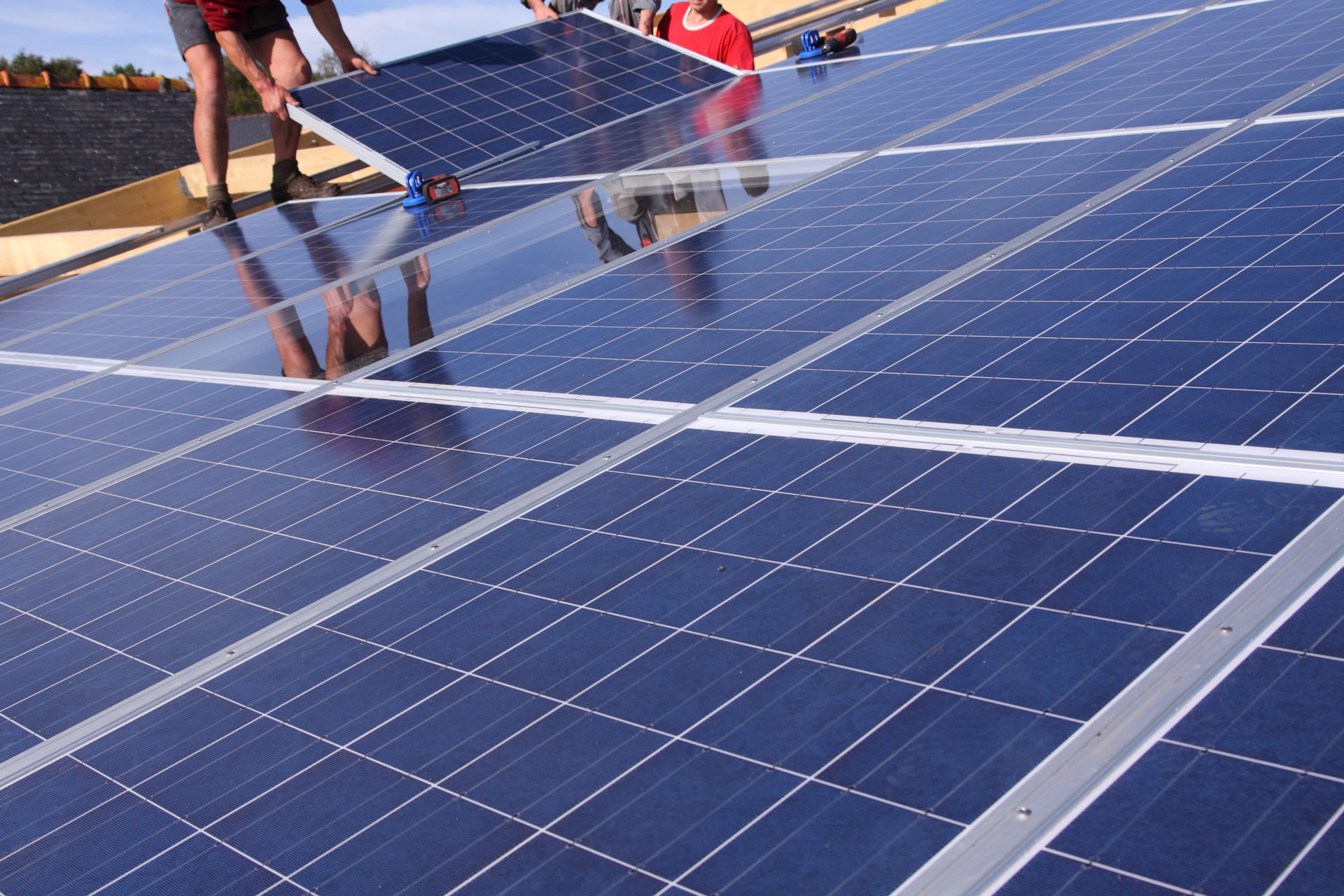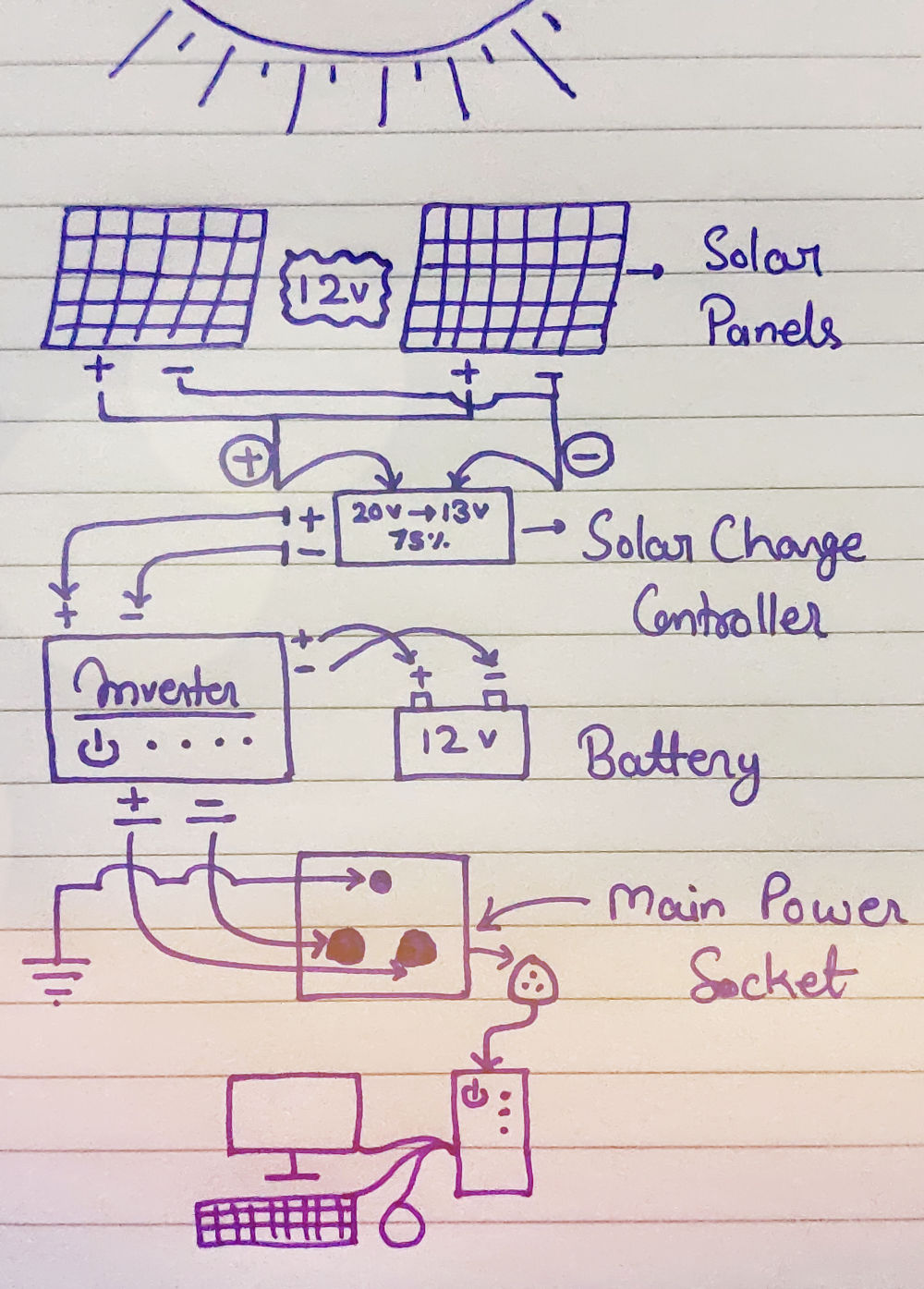The sun is a boon to mankind, without the sun there wouldn’t be any life on earth. Our sun can also be used to generate electricity and that too for free, all we need to do is make one-time setup investments on the solar panels and other required peripherals. This way we can run a full-fledge computer system on it, charge our mobiles and laptops, or even can power the house. Sounds cool, doesn’t it.
But in this article, I’ll be focusing on running a computer on solar power only.

Computers vary in the amount of power they consume, as everything depends upon the hardware you use and what programs you are going to run. Based on my case, I am able to operate 550 Watts full fledge gaming rig using 1 kW of solar panels.
Here is my system’s configuration:
- Intel i7 7700 with Hyper 212 EVO Cooler.
- Gigabyte B150M Motherboard with 16GB of RAM.
- GTX 1050 Ti OC Edition.
- 1 SSD of 250 GB and 1 HDD of 2 TB.
- Cooler Master 550w SMPS.
In all the practical situations, I never touched that 550 Watts uses while intensive uses. On an ideal load, I was around 120 Watts and while gaming or editing it was just touching around max 300 or 350 Watts which is not so high. It includes all kind of power consumption including displays and peripherals.
So the answer is YES, we can operate a computer on solar power. It doesn’t demand a big setup.
But before jumping to its advantages, also know its downsides too, with some fixes we can use to ensure 27×7 electricity availability. Solar panels do not produce electricity at night, even in foggy and rainy days output is way lesser than what it produces in summer.
Keep in mind that solar panels will not generate same power what it is advertised on it, its power generation totally depends upon multiple factors like availaibility of direct sun, numbers of hours it gets that sun radiation, weather conditions, and trees shadows on it. Only on-peak hours (when the sun is on top) it generates its most energy and after that output gets less and lesser.
If you have sufficient budget then opt for mono-crystalline solar panels, they are little costlier and generates about 10% to 15% more energy over poly-crystalline in the same required area and work better in critical weather situations or low sun light situations. You can mix-in both types of solar panels, make sure voltage and wattage are matching.
Check out this article for more in-depth know-how about the types of solar panels.
Usually, for this setup I have used small battery bank, that let me run everything on day time and left with 2 more hours of backup for evening. But if you wish to extend that backup hours then increase the solar panels and buy a large battery backup that can last till next morning. We can use car and boat batteries as they work well, but you can even use a small lawn-and-garden battery to get started.
Also, we need to increase the solar panels to increase output; it is because while using the power at day we left with less power to charge the batteries.
So we need to generate more electrical power than what we are going to use in the day time.
Now we have Solar Panels, Solar Charge Controller, Inverter, and Battery.
Now follow these steps to make the whole system.
Step 1
Fix solar panels on the rooftop or any open area where it is exposed to sunlight directly. Make sure you attach solar panels in a grid layout. Or follow the manual of charge controller.
Step 2
After the whole grid connection, attach the solar’s cable to solar charge controller which will ensure that panels never send too little or too much current to your battery, moreover it prevents the battery from discharging at night by indicating low battery signals.
Step 3
After this, we need to attach inverter and batteries side by side.
Follow the manual offered with the system for the connection guide. Also, make a note that the wire length between inverter and battery should be as little as possible, it is because that wire will be on constant load and length wires easily get wears out on moderate uses.
Step 4
Now on the inverter, you will have an output socket, from there you can use spy guard or make wall socket connection for computer connections.
Refer to this small diagram of the whole system that it should look like.

Everything is just complete now. Now just make a test run and check if everything is working. If done correctly, everything should work fine.
In case not, then double-check if anything is missed or left loose.
Leave a Reply